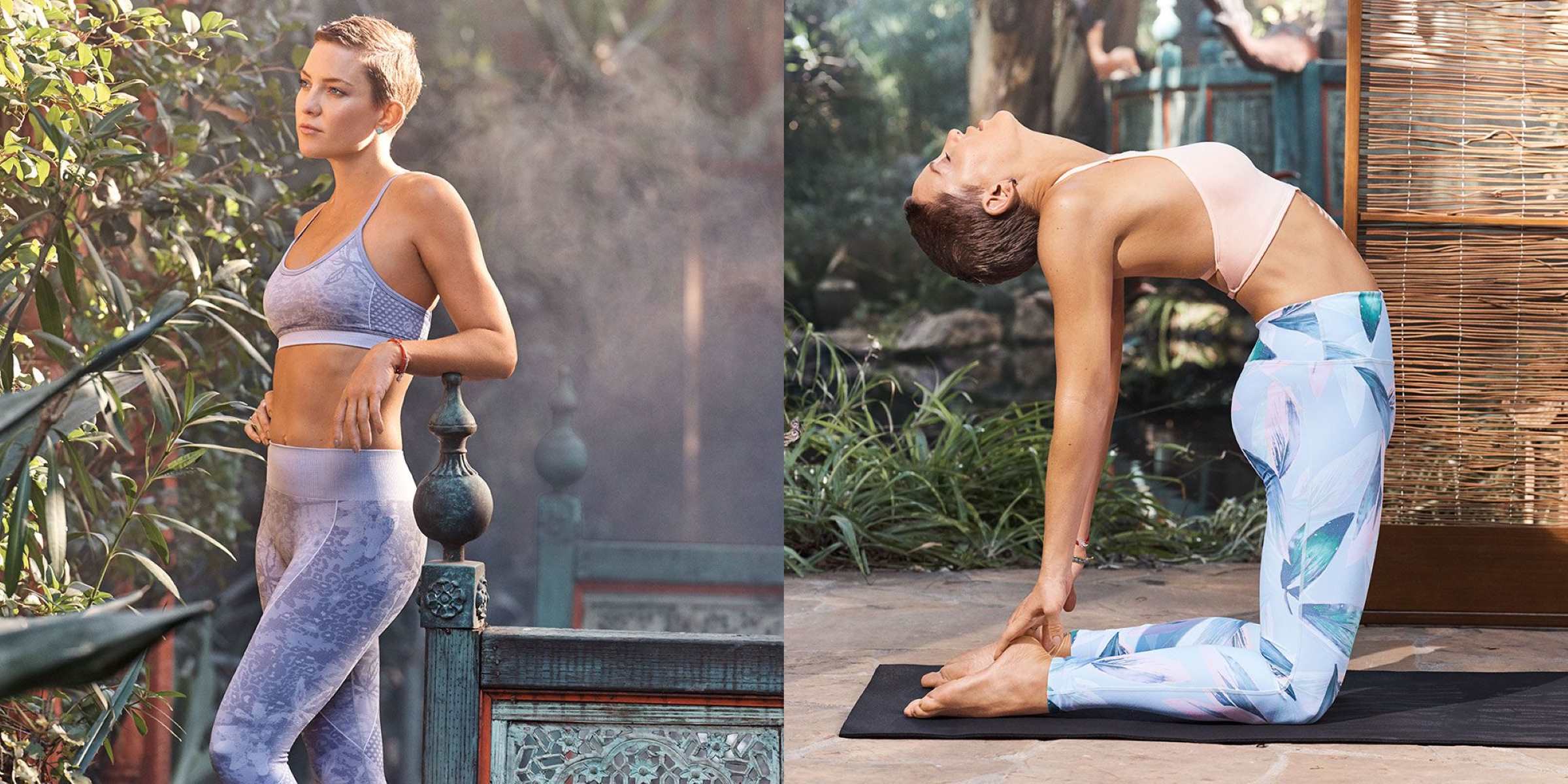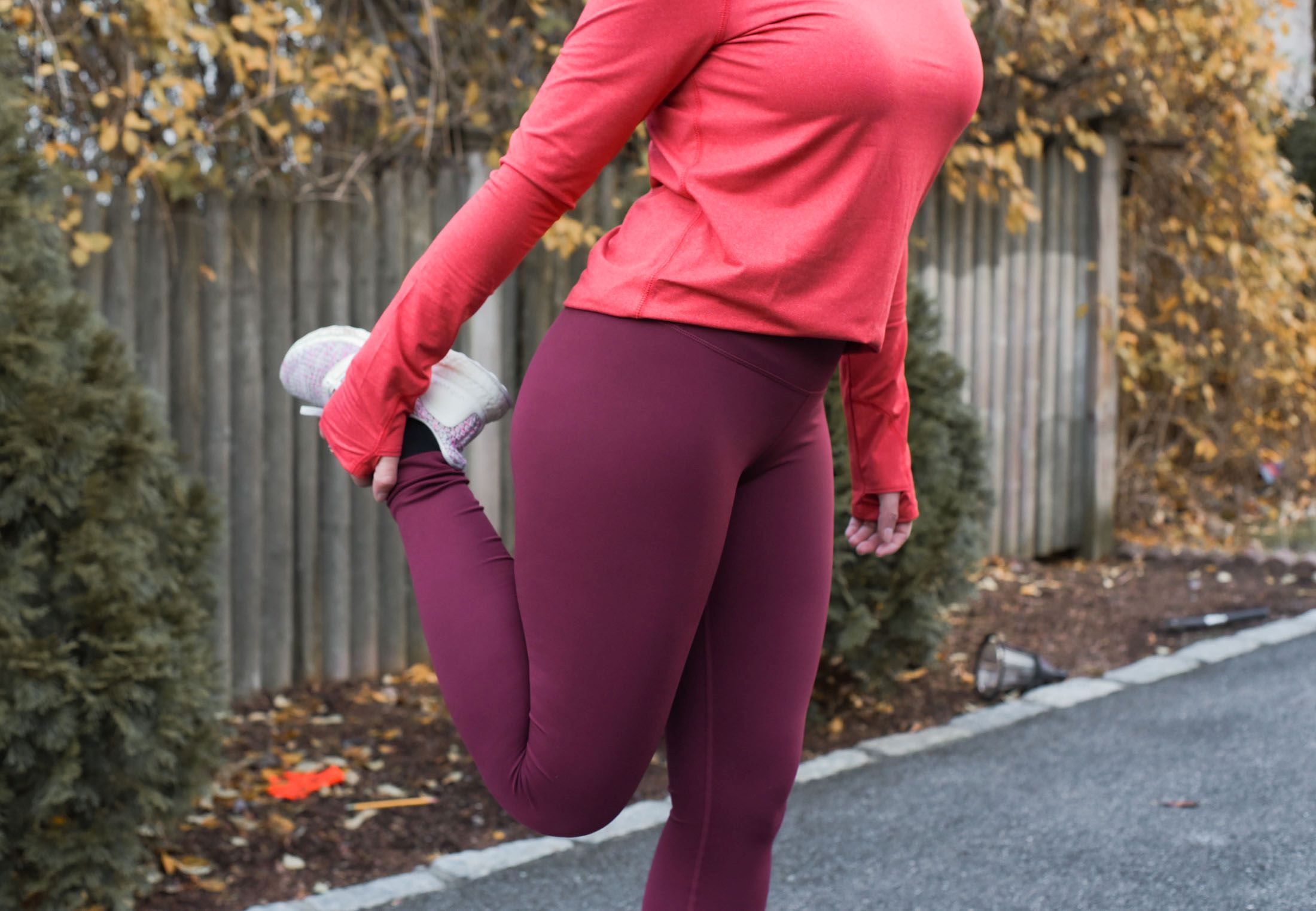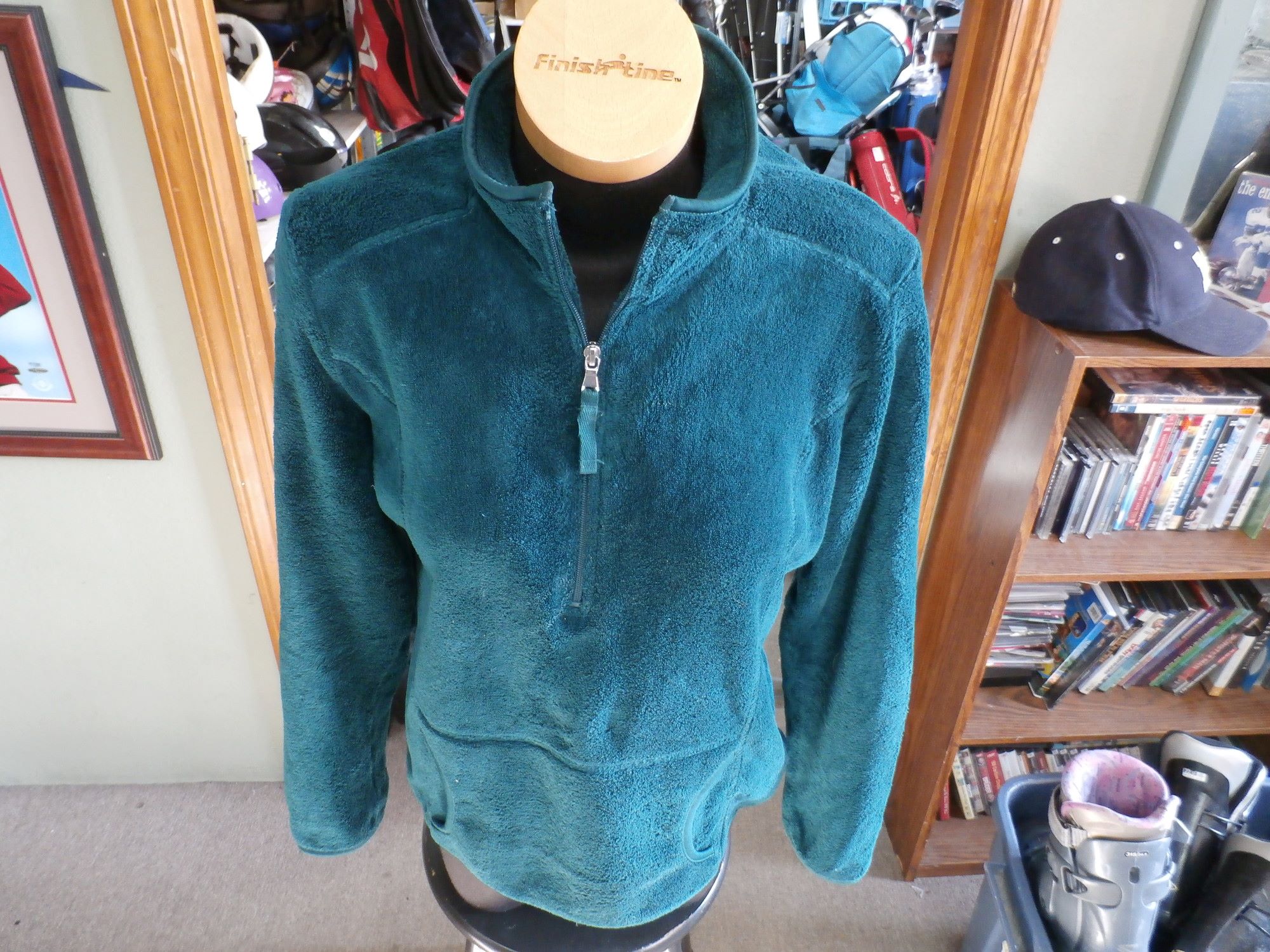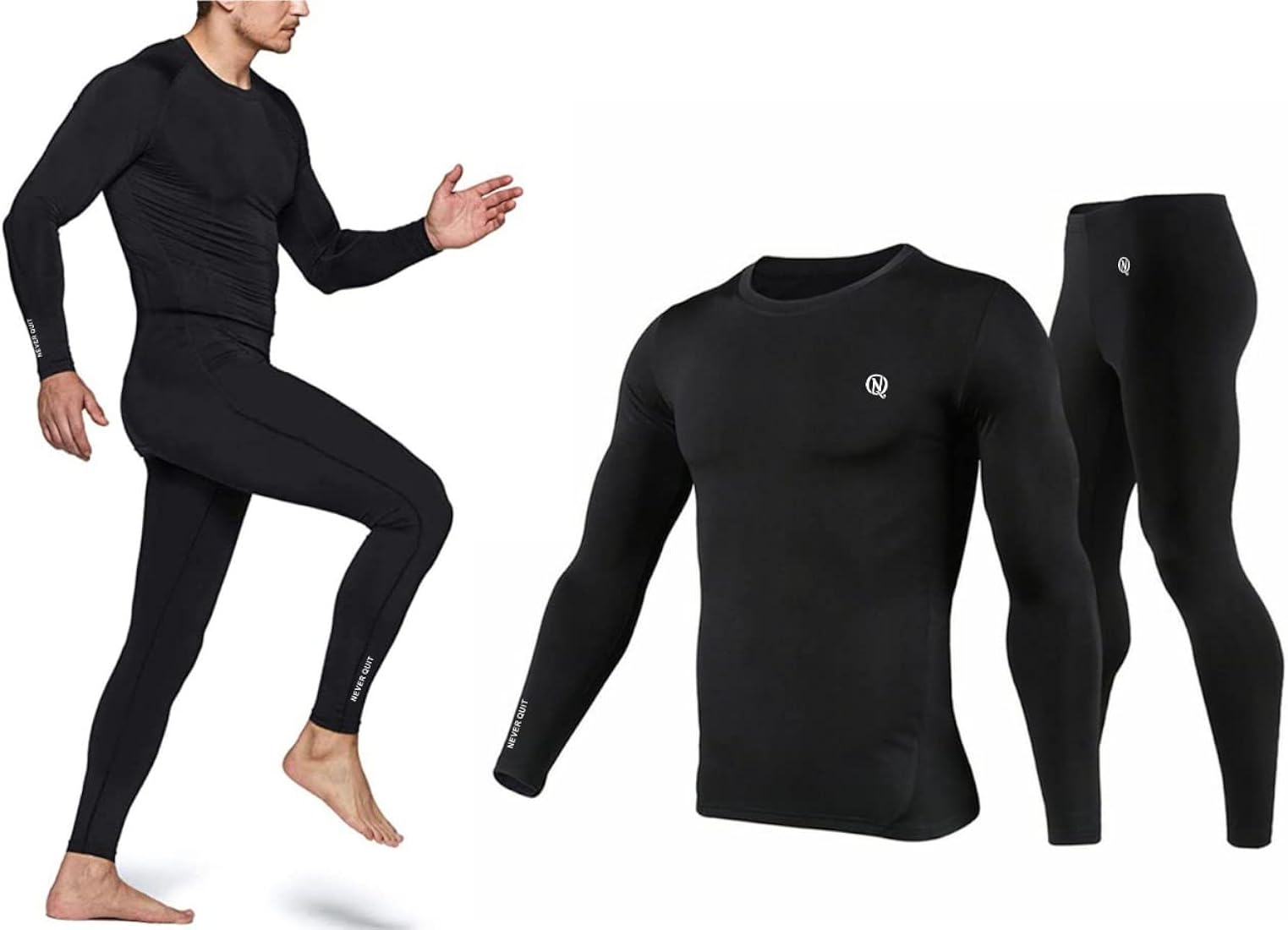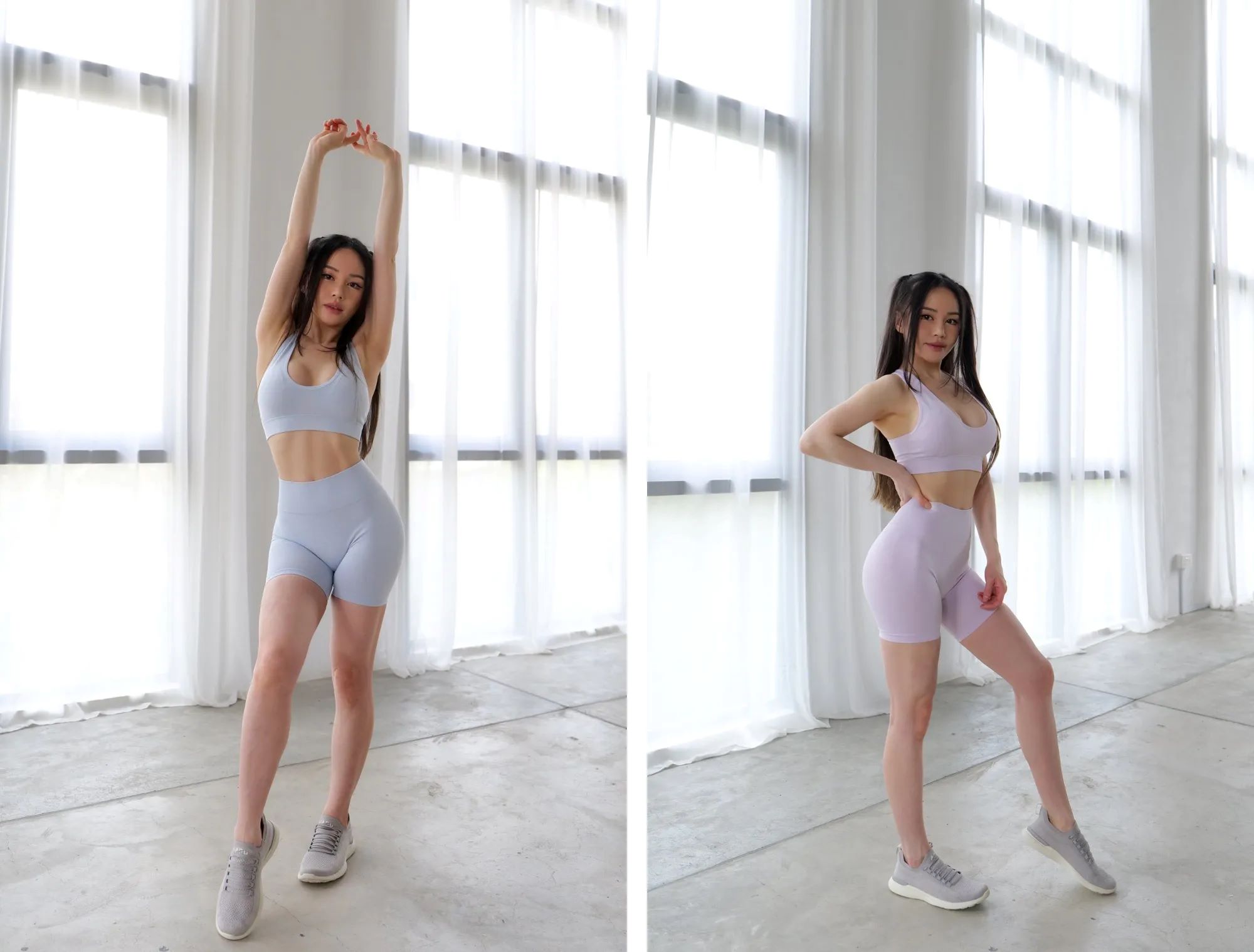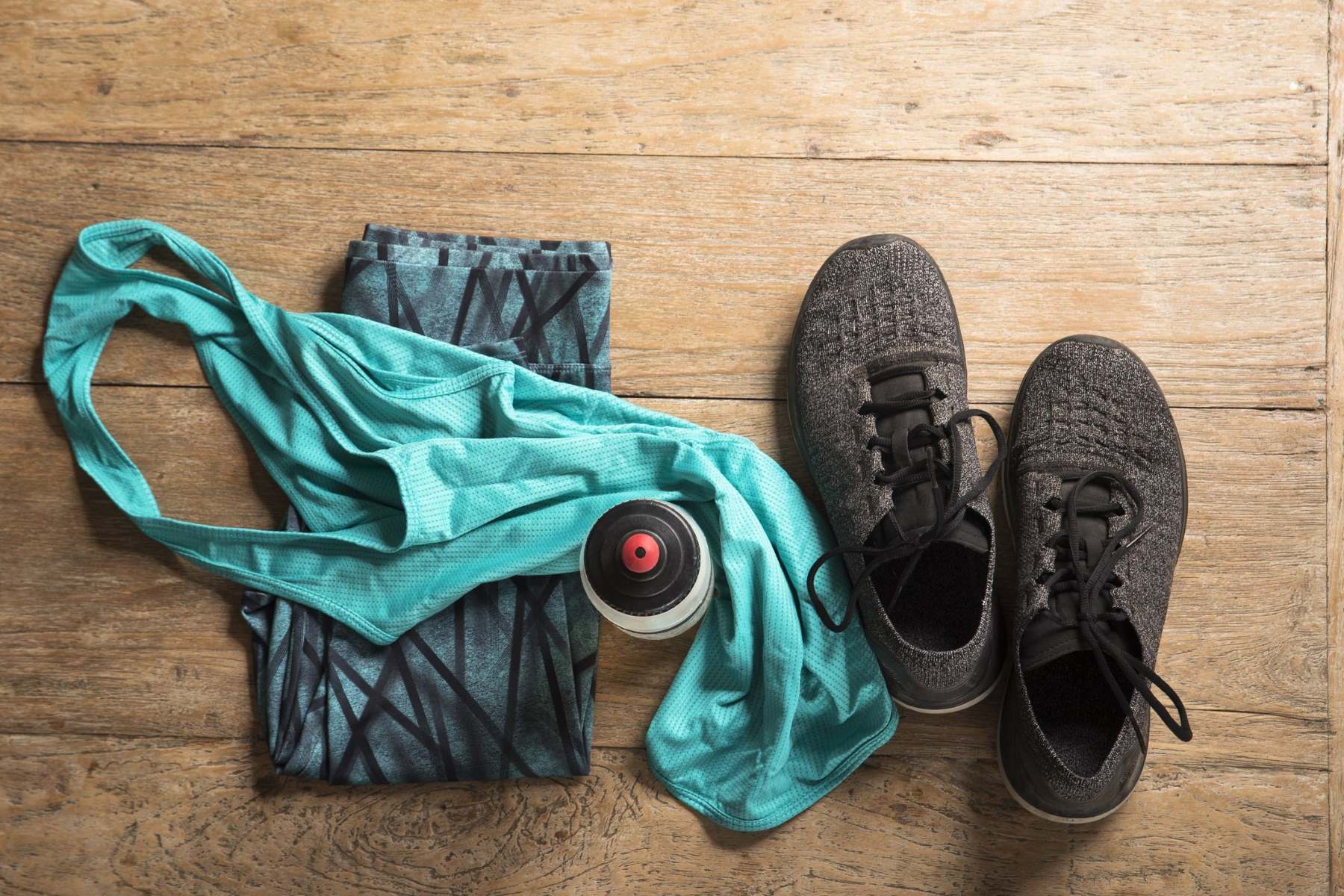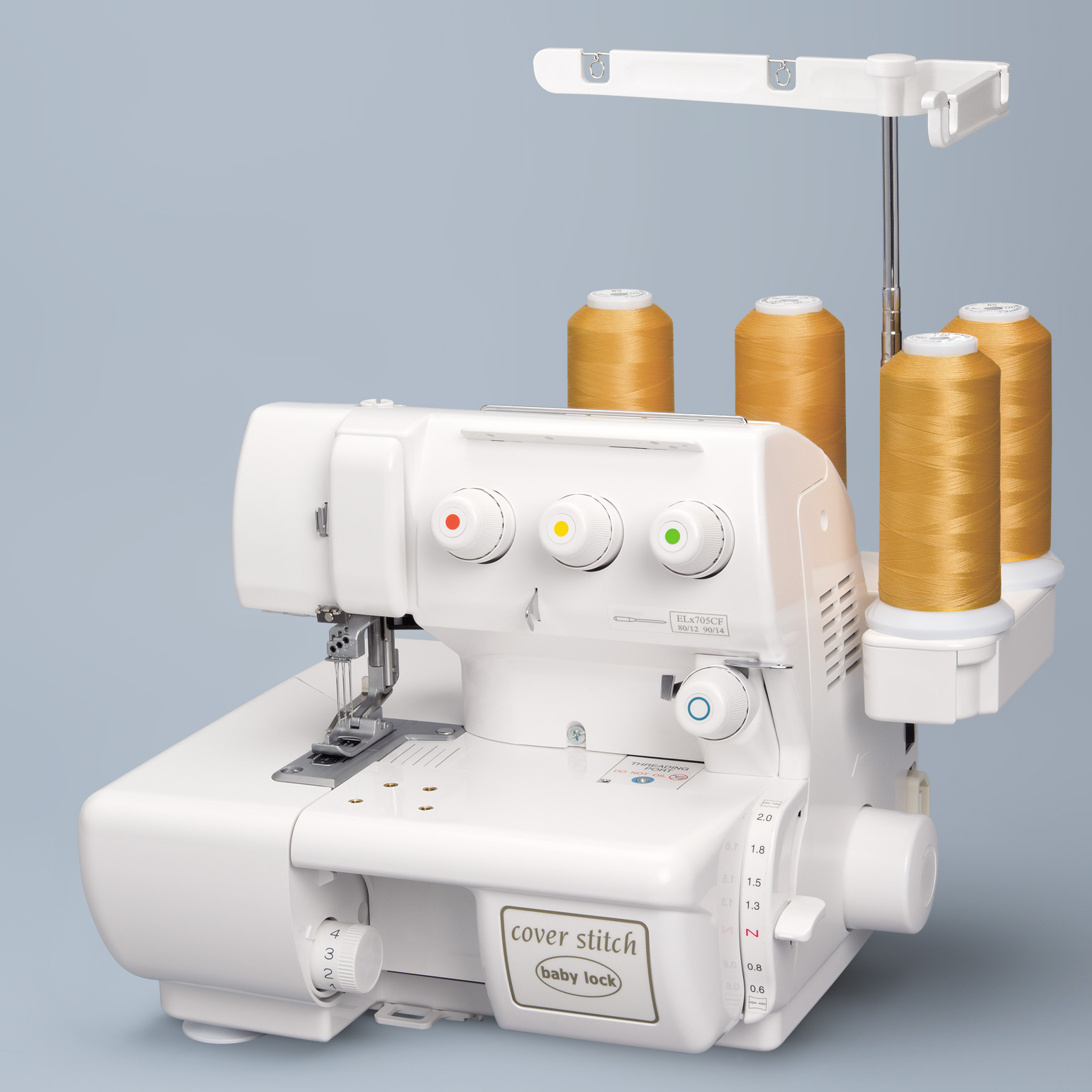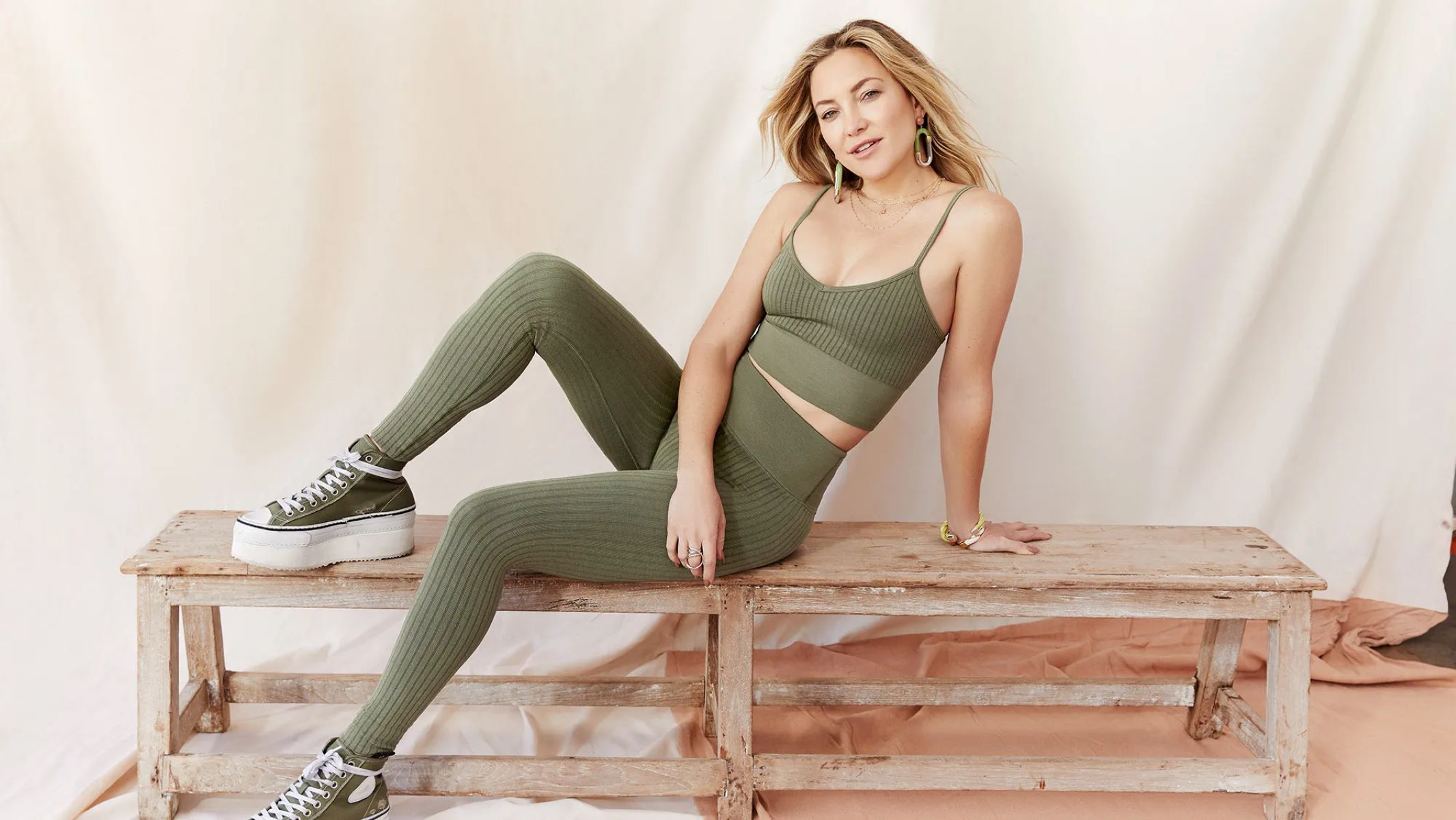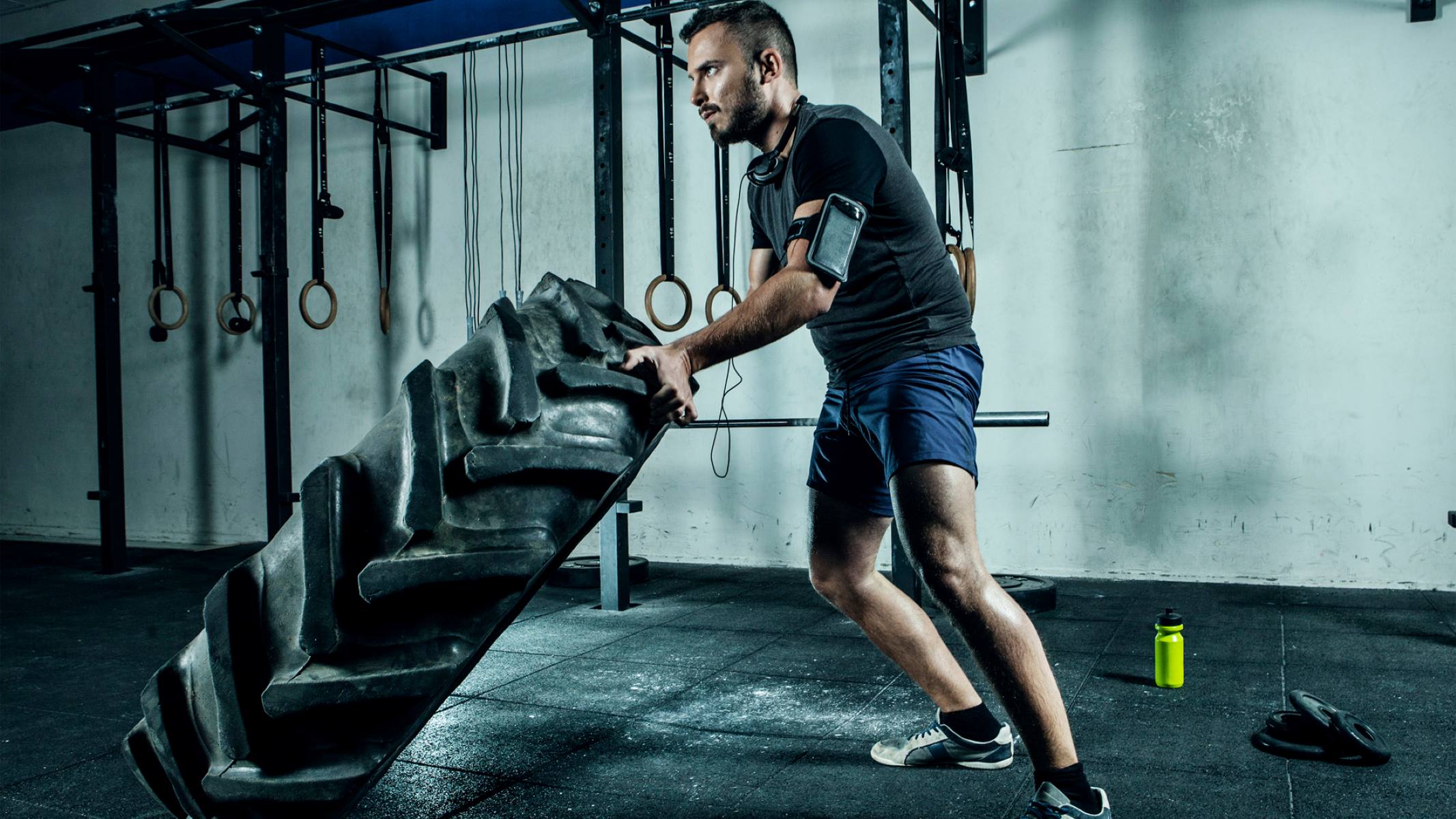

Featured
What Is Activewear
Modified: August 19, 2023
Discover the latest trends and styles in activewear with our featured collection. Stay comfortable and stylish during your workouts with high-quality athletic clothing.
Introduction
Welcome to the world of activewear! In recent years, activewear has become increasingly popular, not only for athletes and fitness enthusiasts but also for everyday individuals seeking comfort, style, and functionality in their clothing choices. Activewear is more than just a fashion trend; it’s a lifestyle choice that promotes an active and healthy way of living.
So, what exactly is activewear? Activewear refers to a category of clothing specifically designed for physical activities and exercise. It includes a wide range of garments such as leggings, sports bras, tank tops, hoodies, and sneakers that are crafted to provide maximum comfort, flexibility, and support during movement.
The functionality of activewear sets it apart from regular clothing. While regular clothing is designed primarily for everyday wear, activewear is engineered to optimize performance and enhance the wearer’s athletic abilities. Whether you’re hitting the gym, going for a jog, practicing yoga, or engaging in any other form of physical activity, activewear is designed to facilitate your movements and keep you comfortable throughout your workout.
One of the key factors that define activewear is the use of specialized fabrics and materials. These materials are specifically chosen for their moisture-wicking properties, breathability, and durability. Activewear garments are designed to keep you cool and dry, wicking away sweat during intense workouts and allowing your skin to breathe.
But it’s not just about functionality. Activewear has evolved to become a fashion statement, with many brands offering stylish designs, vibrant colors, and trendy patterns. This has led to a shift in the way people perceive activewear. It’s no longer just something you wear at the gym; it’s now a versatile and fashionable wardrobe staple that can be worn for various occasions.
In this article, we will delve deeper into the world of activewear, exploring the different types of activewear available, the materials used to construct them, the benefits of wearing activewear, and how it differs from regular clothing. We will also take a look at some popular activewear brands and discuss the latest trends in the industry. Whether you’re a seasoned fitness enthusiast or someone looking to incorporate more physical activity into your daily routine, this article will provide you with valuable insights into the world of activewear and help you choose the right garments for your active lifestyle.
Definition of Activewear
Activewear, as the name implies, is a category of clothing specifically designed for physical activities and exercise. It is characterized by its functionality, comfort, and ability to enhance performance during workouts. Activewear encompasses a wide range of garments, including leggings, sports bras, tank tops, sweatshirts, and sneakers.
One of the distinguishing features of activewear is its construction with specialized fabrics and materials. These materials are chosen for their ability to provide moisture-wicking properties, breathability, and durability. Activewear garments are designed to keep the wearer cool and dry, allowing them to perform at their best even during intense physical activities.
Unlike regular clothing, activewear is specifically engineered to support the body’s movements during exercise. It offers features such as stretchable and flexible fabrics, strategically placed seams, and compression technology to enhance performance and reduce the risk of injury. Activewear is designed to move with the body, providing freedom of movement and ensuring optimal comfort throughout the workout.
Activewear is not limited to just athletic activities. It has transitioned into everyday wear, as people now value the comfort and versatility it offers. You can see activewear being worn for various activities such as running errands, casual outings, or simply lounging around. This shift has led to the rise of athleisure, a fashion trend that combines athletic wear with casual wear to create stylish and functional outfits.
Overall, the definition of activewear goes beyond just clothing. It represents a lifestyle centered around physical activity, health, and well-being. Activewear encourages individuals to lead an active and healthy lifestyle, allowing them to feel comfortable, confident, and supported in their fitness endeavors.
Functionality of Activewear
The functionality of activewear sets it apart from regular clothing. Activewear is designed to meet the specific demands of physical activity and exercise, providing several key benefits to the wearer.
One of the main functions of activewear is to enhance performance during workouts. Activewear garments are designed to optimize movement, providing a comfortable and unrestricted range of motion. The fabrics used in activewear are often stretchable and flexible, allowing the wearer to move freely without any hindrance. This is crucial for activities like yoga, running, or weightlifting, where flexibility and mobility are of utmost importance.
In addition to freedom of movement, activewear also offers support. Sports bras provide the necessary support for the breasts during intense physical activities, reducing discomfort and the risk of injury. Compression garments, such as leggings or tops, offer a snug fit that supports the muscles and improves blood circulation. This can help reduce muscle fatigue and recovery time, allowing you to train harder and longer.
Another essential function of activewear is moisture management. During workouts, our bodies naturally release sweat to cool down. Activewear garments are designed with moisture-wicking properties, allowing the fabric to pull sweat away from the skin to the outer layer where it can evaporate quickly. This helps to keep the body dry, cool, and comfortable, even during intense workouts.
Comfort is also a key factor in the functionality of activewear. The fabrics used in activewear are often lightweight, soft, and breathable, ensuring maximum comfort during workouts. Flat seams and tagless designs help to prevent chafing and irritation, further enhancing the overall comfort of the garments.
Activewear also offers practical features and design elements. Many activewear pieces have pockets for storing small items like keys or smartphones. Some leggings and tops may have reflective elements for visibility during outdoor activities, while others may incorporate UPF protection for sun protection. These additional features enhance the functionality and practicality of activewear.
Overall, the functionality of activewear plays a crucial role in enhancing performance, providing support, managing moisture, and ensuring maximum comfort during physical activities. By choosing activewear over regular clothing, individuals can experience the benefits of functional and purpose-driven garments that contribute to their overall fitness journey.
Types of Activewear
Activewear encompasses a wide range of garments designed for various types of physical activities and exercises. Here are some of the common types of activewear:
- Leggings: Leggings are a staple in activewear. They are form-fitting and made from stretchable materials that provide flexibility and freedom of movement. Leggings come in different lengths, including full-length, capri, and shorts, catering to different preferences and activities.
- Sports Bras: Sports bras are essential for women engaging in physical activities. They provide support and minimize breast movement, reducing discomfort and the risk of tissue damage. Sports bras come in various styles and support levels, ranging from low to high impact, to accommodate different activities and body types.
- Tank Tops and T-shirts: Tank tops and t-shirts are lightweight and breathable options for upper body activewear. They are designed to keep you cool during workouts and provide freedom of movement for your arms and shoulders. Many activewear tops are made from moisture-wicking fabrics that help to manage sweat and keep you dry.
- Hoodies and Jackets: Hoodies and jackets are ideal for outdoor activities or colder climates. They are designed to provide insulation and protect you from the elements. Activewear hoodies and jackets are often made from materials that offer both warmth and breathability.
- Shorts and Skorts: Shorts and skorts are popular options for activities that require more leg movement, such as running or tennis. They are designed to provide comfort, breathability, and ease of movement. Many activewear shorts and skorts come with built-in underwear for added support.
- Sneakers: Footwear is an essential part of activewear. Proper athletic shoes provide support, cushioning, and stability during workouts or sports activities. Activewear sneakers are designed with performance in mind, offering features such as shock absorption, traction, and breathability.
- Accessories: Activewear accessories such as sweatbands, headbands, and gloves can enhance comfort and performance during workouts. These accessories help to manage sweat, keep hair out of the face, and provide grip for better handling of equipment.
These are just a few examples of the types of activewear available. The specific type of activewear you choose depends on the activity you’re engaging in, personal preferences, and the level of support and functionality required for your workout.
Materials Used in Activewear
The materials used in activewear play a vital role in its performance, comfort, and durability. Activewear brands carefully select fabrics that offer specific properties to meet the demands of physical activity. Here are some common materials used in activewear:
- Spandex: Spandex, also known as elastane or Lycra, is a stretchable synthetic fiber commonly used in activewear. It provides excellent flexibility and allows for a wide range of motion without losing its shape. Spandex enhances the fit and comfort of activewear garments, ensuring a snug yet flexible fit.
- Polyester: Polyester is a lightweight and durable synthetic fabric widely used in activewear. It is known for its moisture-wicking properties, which help to draw sweat away from the body and keep the wearer dry. Polyester is also quick-drying, making it ideal for activities that involve intense sweating.
- Nylon: Nylon is another synthetic fabric commonly found in activewear. It is known for its strength, durability, and abrasion resistance. Nylon is often blended with other fabrics to enhance their durability and stretchability. It is also lightweight and moisture-wicking, making it a popular choice for activewear garments.
- Cotton: Although less commonly used in activewear, cotton is still sometimes incorporated, especially in casual or lounge-style activewear. Cotton is breathable and comfortable, allowing for better air circulation. However, it doesn’t offer the same moisture-wicking properties as synthetic fibers, making it less suitable for intense workouts.
- Bamboo: Bamboo fabrics are gaining popularity in activewear due to their eco-friendly and sustainable nature. Bamboo fibers are naturally breathable, hypoallergenic, and moisture-wicking. They offer a soft and comfortable feel, making them a great choice for activewear garments.
- Mesh: Mesh is a type of fabric characterized by its open, porous structure. It is often used as panels or inserts in activewear garments to enhance breathability and ventilation. Mesh allows air to circulate freely, keeping the body cool and reducing the chances of overheating.
- Compression Fabrics: Compression fabrics, such as compression nylon or compression spandex, are designed to provide a snug and supportive fit. They apply gentle pressure to the muscles, improving blood flow, reducing muscle fatigue, and aiding in recovery. Compression fabrics also offer thermal regulation, helping to keep the body at an optimal temperature during workouts.
These are just a few examples of the materials commonly used in activewear. Each material offers unique properties that contribute to the performance, comfort, and longevity of activewear garments. The choice of material depends on factors such as the intended activity, climate, and personal preferences for comfort and functionality.
Benefits of Wearing Activewear
Wearing activewear brings several benefits beyond just fashion and style. Here are some of the advantages of incorporating activewear into your wardrobe:
- Comfort: Activewear is designed with comfort in mind. The materials used in activewear are lightweight, breathable, and flexible, allowing for ease of movement during workouts. The fabrics are often moisture-wicking, keeping you dry and comfortable even during intense physical activities.
- Performance Enhancement: Activewear is specifically engineered to optimize performance during physical activities. The stretchable fabrics and ergonomic designs allow for a full range of motion without restriction. The supportive features of activewear, such as sports bras and compression garments, reduce discomfort and enhance performance by providing the necessary support.
- Moisture Management: Activewear fabrics are designed to wick moisture away from the body, quickly drying sweat and preventing the buildup of moisture. This helps to regulate body temperature and prevent discomfort caused by wet clothing. By keeping you dry, activewear also helps to reduce the risk of skin irritation and chafing.
- Flexibility and Versatility: Activewear is not limited to the gym. It has transitioned into everyday wear, offering flexibility and versatility in your wardrobe choices. You can wear activewear for running errands, meeting friends, or lounging at home without compromising on comfort or style.
- Confidence Boost: Wearing activewear can boost your confidence. The functional and stylish designs make you feel good about your appearance, giving you a sense of motivation and empowerment. Feeling confident in your activewear can have a positive impact on your mindset, leading to more enjoyment and dedication in your fitness journey.
- Durability: Activewear is constructed with high-quality materials that are designed to withstand the rigors of physical activity. The fabrics used in activewear are durable, resistant to fading and pilling, and able to withstand frequent washing without losing shape or elasticity. This ensures that your activewear garments last longer and can withstand the demands of your workout routine.
- Injury Prevention: Activewear provides support and protection to the body during workouts, reducing the risk of injury. Sports bras offer breast support, reducing breast movement and minimizing the strain on breast tissue. Compression garments can help stabilize muscles, reduce muscle vibration, and provide better joint support, resulting in a lower risk of injuries during physical activities.
These benefits highlight the importance of wearing activewear, not only for athletic performance but also for comfort, confidence, and overall well-being. By choosing activewear over regular clothing, you can reap the advantages it offers and enhance your active lifestyle.
Activewear vs. Regular Clothing
Activewear and regular clothing serve different purposes and have distinct characteristics. Here are some key differences between activewear and regular clothing:
- Functionality: Activewear is specifically designed for physical activities and exercise, whereas regular clothing is designed for everyday wear. Activewear garments are engineered to enhance performance, provide support, and promote comfort during workouts. Regular clothing, on the other hand, focuses more on style and everyday functionality.
- Comfort: Activewear prioritizes comfort, using stretchable and breathable fabrics that allow for ease of movement and moisture-wicking properties to keep the wearer dry. Regular clothing is often made from a wider variety of materials, which may prioritize fashion over comfort or may not offer the same levels of stretch and breathability as activewear fabrics.
- Design and Style: Activewear has evolved to become a fashion statement in its own right, with brands offering trendy designs, vibrant colors, and fashionable patterns. Activewear combines functionality with style, allowing individuals to feel confident and motivated during workouts. Regular clothing offers more variety in terms of style options, catering to different personal preferences and occasions.
- Performance Enhancement: Activewear is specifically designed to enhance performance during physical activities. It includes features such as compression technology, strategically placed seams, and supportive garments like sports bras, all aimed at optimizing movement and reducing the risk of injury. Regular clothing, while comfortable for everyday wear, may not provide the same level of support and performance benefits as activewear.
- Durability: Activewear is constructed with durability in mind, using high-quality materials that can withstand the demands of physical activity. The fabrics used in activewear are often more resistant to fading, pilling, and stretching compared to regular clothing materials. Regular clothing, while durable in its own right, may not be designed to withstand the same level of wear and tear as activewear.
- Context of Use: Activewear is primarily worn for physical activities such as exercising, running, or playing sports. It is designed to provide functionality, mobility, and performance benefits during these activities. Regular clothing is suitable for a wide range of activities and occasions, from casual outings to formal events, but may not offer the same level of functionality and performance enhancement as activewear.
Understanding the differences between activewear and regular clothing helps individuals make informed choices about their wardrobe and ensures they have the appropriate attire for different activities. While regular clothing may offer style and versatility, activewear is specifically tailored to provide comfort, performance enhancement, and support during physical activities.
Popular Activewear Brands
With the rise of activewear as a fashion trend and lifestyle choice, several popular brands have emerged, offering a wide range of stylish and functional activewear. Here are some of the most well-known activewear brands:
- Nike: Nike is one of the leading brands in the activewear industry. Known for its innovative designs, cutting-edge technology, and iconic logo, Nike offers a vast range of activewear options for both men and women. From performance-focused sneakers to breathable leggings and stylish tops, Nike caters to athletes and casual fitness enthusiasts alike.
- Adidas: Adidas is another prominent activewear brand that has a strong presence in the market. Renowned for its quality and stylish designs, Adidas offers a diverse range of activewear, including performance-driven apparel, durable footwear, and functional accessories. With a focus on both fashion and functionality, Adidas caters to individuals of all ages and fitness levels.
- Lululemon: Lululemon is known for its luxury activewear targeted primarily at yoga and athletic pursuits. The brand emphasizes both performance and style, offering high-quality fabrics, thoughtful designs, and comfortable fits. Lululemon has gained a loyal following, particularly among yoga enthusiasts, offering a wide range of leggings, tops, sports bras, and accessories.
- Under Armour: Under Armour is a popular activewear brand that specializes in performance-focused apparel. Known for its innovative fabric technologies, Under Armour offers a range of high-performance activewear for various activities, including running, training, and sports. With a focus on moisture-wicking and cooling properties, Under Armour garments are designed to keep athletes dry and comfortable during intense workouts.
- Puma: Puma is a globally recognized brand that offers a mix of sportswear and lifestyle apparel. Puma activewear combines style and functionality, providing individuals with both comfort and performance enhancement. From trendy sneakers to workout leggings and sweat-wicking tops, Puma appeals to those seeking fashionable activewear options.
- Reebok: Reebok is a longstanding activewear brand known for its athletic shoes, apparel, and accessories. With a focus on both sports performance and lifestyle wear, Reebok offers a wide range of activewear for men and women. The brand is particularly known for its collaborations with fitness influencers and celebrities, bringing fashionable and functional activewear to the market.
- Athleta: Athleta is a women-centric activewear brand that offers a range of apparel for various activities like yoga, running, swimming, and hiking. Known for its inclusive sizing and body-positive messaging, Athleta offers functional and fashionable activewear designed to empower women and promote an active lifestyle.
These are just a few examples of the popular activewear brands available today. Each brand offers its own unique style, technology, and focus, catering to the diverse needs and tastes of individuals looking for fashionable, functional, and performance-enhancing activewear.
Activewear Trends
Activewear trends are constantly evolving as fashion, technology, and fitness intersect. Here are some of the current trends shaping the activewear industry:
- Athleisure: Athleisure is a fashion trend that blurs the line between activewear and everyday wear. It combines athletic wear with casual clothing, creating a stylish and comfortable look. Athleisure outfits can be worn from the gym to social gatherings, allowing individuals to prioritize both style and functionality in their wardrobe choices.
- Prints and Patterns: Activewear is no longer limited to solid colors. Prints and patterns have become increasingly popular, adding a touch of fun, vibrancy, and personality to activewear garments. From floral designs to geometric patterns, activewear brands are incorporating a wide range of prints and patterns into leggings, tops, and sports bras.
- Sustainable Activewear: With growing awareness of sustainability and eco-consciousness, sustainable activewear has gained traction in recent years. Brands are launching activewear lines made from recycled materials, using environmentally friendly production processes, and focusing on reducing waste. Sustainable activewear not only supports the environment but also appeals to individuals who prioritize eco-friendly practices in their purchasing decisions.
- Crop Tops and Bralettes: Crop tops and bralettes have become popular activewear choices, particularly for activities like yoga and Pilates. These garments offer comfort, breathability, and style while providing the necessary support. Paired with high-waisted leggings or shorts, crop tops and bralettes create a trendy and fashionable activewear look.
- Seamless Construction: Seamless activewear has become increasingly popular for its comfort and sleek appearance. Seamless garments are made without any stitching or seams, providing a smooth and friction-free feel against the skin. This construction technique also enhances the flexibility and stretchability of the fabric, allowing for a better range of motion during workouts.
- Functional Accessories: Activewear accessories are not limited to sweatbands and headbands. Brands are now incorporating functional accessories directly into activewear garments. This includes features like built-in pockets in leggings or tops for storing small items, thumbholes in sleeves for added hand coverage, and reflective elements for better visibility during outdoor activities.
- Matching Sets: Coordinating activewear sets have become a popular trend, with brands offering matching tops and bottoms or even full sets including sports bras, leggings, and jackets. These sets provide a put-together look and make it easier to mix and match different pieces while maintaining a cohesive and stylish outfit.
These trends showcase the dynamic and ever-evolving nature of activewear. Whether it’s embracing sustainability, experimenting with patterns and prints, or incorporating functional features and accessories, activewear trends continue to evolve to meet the changing needs and preferences of individuals seeking both fashion and functionality in their activewear choices.
Choosing the Right Activewear
Choosing the right activewear is essential to ensure comfort, performance, and enjoyment during physical activities. Here are some factors to consider when selecting activewear:
- Activity Type: Consider the specific activities you will be engaging in. Different activities may require different types of activewear. For example, yoga may require more flexible and stretchable materials, while running may require moisture-wicking and supportive fabrics.
- Fabric: Look for activewear made from high-quality, moisture-wicking fabrics. Fabrics like spandex, polyester, or nylon are commonly used in activewear for their stretchability, breathability, and moisture-wicking properties. Consider the climate and intensity of your workouts when choosing fabrics.
- Fit: Proper fit is crucial in activewear. It should be snug and supportive without being overly tight or restrictive. The fit may vary depending on personal preference and the activity. For example, sports bras should provide adequate support, while leggings should offer a comfortable yet flexible fit.
- Support: Consider the level of support needed for your activities. High-impact workouts may require more support, especially for the breasts. Look for sports bras with adjustable straps, underwire support, or specific support levels indicated. Compression garments can also provide extra support for muscles and joints.
- Comfort Features: Look for activewear with comfort-enhancing features such as flat seams, tagless designs, and moisture-wicking capabilities. These features help to prevent chafing, irritation, and keep you cool and dry during workouts.
- Style and Aesthetics: Choose activewear that you feel confident and comfortable in. Consider your personal style preferences and choose colors, patterns, and designs that reflect your personality. Feeling good in your activewear can positively impact your motivation and enjoyment during workouts.
- Quality and Durability: Opt for activewear from reputable brands that prioritize quality and durability. High-quality materials and construction will ensure that your activewear lasts longer and can withstand the demands of your workouts. Look for indicators of quality such as reinforced stitching and durable trims.
- Budget: Set a budget for your activewear purchases. While quality and performance are important, it’s also important to find activewear within your budget. Consider exploring sales, discounts, or purchasing from more affordable activewear brands without compromising on quality.
Remember to try on activewear before purchasing or check the size charts provided by the brand to ensure the best fit. If possible, read reviews or seek recommendations from others who have tried the activewear brand or specific product.
By considering these factors and taking the time to choose the right activewear, you can enhance your comfort, performance, and overall enjoyment during your workouts and physical activities.
Conclusion
Activewear has become more than just a trend; it has become a lifestyle choice for individuals seeking comfort, functionality, and style in their clothing. Activewear is designed to enhance performance during physical activities, providing freedom of movement, support, and moisture-wicking properties to keep the wearer cool and dry. The materials used in activewear, such as spandex, polyester, and nylon, offer durability and stretchability for optimal comfort and flexibility.
Choosing the right activewear involves considering factors such as the type of activity, fabric, fit, support, and comfort features. It is essential to select activewear that caters to your specific needs and preferences, ensuring an enjoyable and effective workout experience. With popular activewear brands like Nike, Adidas, Lululemon, and Under Armour offering a wide range of stylish and functional options, finding the right activewear has never been easier.
Activewear trends continue to evolve, with athleisure, prints and patterns, sustainable activewear, and functional accessories being some of the current trends that blend fashion and fitness seamlessly. Ultimately, activewear not only promotes a healthy and active lifestyle but also boosts confidence and motivation in achieving fitness goals.
As you embark on your fitness journey, choosing the right activewear will make a significant difference in your performance, comfort, and enjoyment. So, take the time to explore the variety of options available, try different brands, and find activewear that makes you feel comfortable, confident, and ready to conquer any workout or physical activity.
